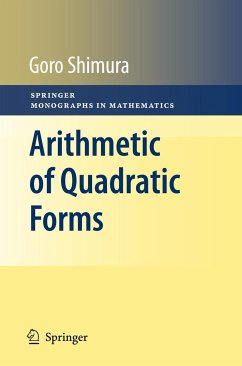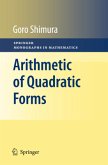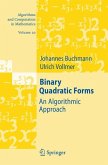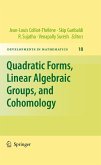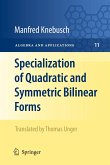This book can be divided into two parts. The ?rst part is preliminary and consists of algebraic number theory and the theory of semisimple algebras. The raison d' etre of the book is in the second part, and so let us ?rst explain the contents of the second part. There are two principal topics: (A) Classi?cation of quadratic forms; (B) Quadratic Diophantine equations. Topic (A) can be further divided into two types of theories: (a1) Classi?cation over an algebraic number ?eld; (a2) Classi?cation over the ring of algebraic integers. To classify a quadratic form ? over an algebraic number ?eld F, almost all previous authors followed the methods of Helmut Hasse. Namely, one ?rst takes ? in the diagonal form and associates an invariant to it at each prime spot of F, using the diagonal entries. A superior method was introduced by Martin Eichler in 1952, but strangely it was almost completely ignored, until I resurrected it in one of my recent papers. We associate an invariant to ? at each prime spot, which is the same as Eichler's, but we de?ne it in a di?erent and more direct way, using Cli?ord algebras. In Sections 27 and 28 we give an exposition of this theory. At some point we need the Hasse norm theorem for a quadratic extension of a number ?eld, which is included in class ?eld theory. We prove it when the base ?eld is the rational number ?eld to make the book self-contained in that case.
From the reviews:
"This impressive monograph is devoted to some aspects of the arithmetic theory of quadratic forms to which the author has made important contributions in recent years. ... Anyone with an interest in the book's topic will find this volume well worth his or her time." (Ch. Baxa, Monatshefte für Mathematik, Vol. 169 (1), January, 2013)
"In this book Goro Shimura presents some very interesting material in a clear and readable style. ... There is plenty to learn from an introduction to a highly technical subject by one of its leaders. ... The book will serve well as a basis for a couple of postgraduate courses. ... the material is essentially self-contained the exposition is often very technical ... ." (Peter Shiu, The Mathematical Gazette, Vol. 96 (536), July, 2012)
"Beginners and experts ... have much to gain from the author's insights and perspectives presented in this book on the arithmetic theory of quadratic forms. ... In order to make the treatment of these topics accessible to readers with a general background in abstract algebra, the author includes preliminary material on algebraic number theory and the theory of semisimple algebras. Throughout the book, the presentation is concise and elegant." (A. G. Earnest, Mathematical Reviews, Issue 2011 m)
"Goro Shimura is one of the world's premier arithmeticians, with his name attached to a number of marvelous things. ... it presents a lot more than its title suggests and does so magnificently. ... Shimura's Arithmetic of Quadratic Forms is another very important monograph by this fine scholar and, to use a hackneyed but apt phrase, will richly repay the reader who invests his time in a careful study of its pages." (Michael Berg, The Mathematical Association of America, August, 2010)
"This impressive monograph is devoted to some aspects of the arithmetic theory of quadratic forms to which the author has made important contributions in recent years. ... Anyone with an interest in the book's topic will find this volume well worth his or her time." (Ch. Baxa, Monatshefte für Mathematik, Vol. 169 (1), January, 2013)
"In this book Goro Shimura presents some very interesting material in a clear and readable style. ... There is plenty to learn from an introduction to a highly technical subject by one of its leaders. ... The book will serve well as a basis for a couple of postgraduate courses. ... the material is essentially self-contained the exposition is often very technical ... ." (Peter Shiu, The Mathematical Gazette, Vol. 96 (536), July, 2012)
"Beginners and experts ... have much to gain from the author's insights and perspectives presented in this book on the arithmetic theory of quadratic forms. ... In order to make the treatment of these topics accessible to readers with a general background in abstract algebra, the author includes preliminary material on algebraic number theory and the theory of semisimple algebras. Throughout the book, the presentation is concise and elegant." (A. G. Earnest, Mathematical Reviews, Issue 2011 m)
"Goro Shimura is one of the world's premier arithmeticians, with his name attached to a number of marvelous things. ... it presents a lot more than its title suggests and does so magnificently. ... Shimura's Arithmetic of Quadratic Forms is another very important monograph by this fine scholar and, to use a hackneyed but apt phrase, will richly repay the reader who invests his time in a careful study of its pages." (Michael Berg, The Mathematical Association of America, August, 2010)

